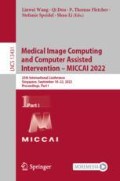Abstract
Understanding the intrinsic patterns of human brain is important to make inferences about the mind and brain-behavior association. Electrophysiological methods (i.e. MEG/EEG) provide direct measures of neural activity without the effect of vascular confounds. The blood oxygenated level-dependent (BOLD) signal of functional MRI (fMRI) reveals the spatial and temporal brain activity across different brain regions. However, it is unclear how to associate the high temporal resolution Electrophysiological measures with high spatial resolution fMRI signals. Here, we present a novel interpretable model for coupling the structure and function activity of brain based on heterogeneous contrastive graph representation. The proposed method is able to link manifest variables of the brain (i.e. MEG, MRI, fMRI and behavior performance) and quantify the intrinsic coupling strength of different modal signals. The proposed method learns the heterogeneous node and graph representations by contrasting the structural and temporal views through the mind to multimodal brain data. The first experiment with 1200 subjects from Human connectome Project (HCP) shows that the proposed method outperforms the existing approaches in predicting individual gender and enabling the location of the importance of brain regions with sex difference. The second experiment associates the structure and temporal views between the low-level sensory regions and high-level cognitive ones. The experimental results demonstrate that the dependence of structural and temporal views varied spatially through different modal variants. The proposed method enables the heterogeneous biomarkers explanation for different brain measurements.
Access this chapter
Tax calculation will be finalised at checkout
Purchases are for personal use only
References
Bassett, D.S., Sporns, O.: Network neuroscience. Nat. Neurosci. 20(3), 353–364 (2017)
Bullmore, E., Sporns, O.: Complex brain networks: graph theoretical analysis of structural and functional systems. Nat. Rev. Neurosci. 10(3), 186–198 (2009)
Dale, A.M., Halgren, E.: Spatiotemporal mapping of brain activity by integration of multiple imaging modalities. Curr. Opin. Neurobiol. 11(2), 202–208 (2001)
Fornito, A., Zalesky, A., Breakspear, M.: Graph analysis of the human connectome: promise, progress, and pitfalls. Neuroimage 80, 426–444 (2013)
Friston, K.J., Harrison, L., Penny, W.: Dynamic causal modelling. Neuroimage 19(4), 1273–1302 (2003)
Gadgil, S., Zhao, Q., Pfefferbaum, A., Sullivan, E.V., Adeli, E., Pohl, K.M.: Spatio-Temporal Graph Convolution for Resting-State fMRI Analysis. In: Martel, A.L., et al. (eds.) MICCAI 2020. LNCS, vol. 12267, pp. 528–538. Springer, Cham (2020). https://doi.org/10.1007/978-3-030-59728-3_52
Glasser, M.F., Coalson, T.S., Robinson, E.C., Hacker, C.D., Harwell, J., Yacoub, E., Ugurbil, K., Andersson, J., Beckmann, C.F., Jenkinson, M., et al.: A multi-modal parcellation of human cerebral cortex. Nature 536(7615), 171–178 (2016)
Glasser, M.F., et al.: The minimal preprocessing pipelines for the human connectome project. Neuroimage 80, 105–124 (2013)
Hagmann, P., Cammoun, L., Gigandet, X., Meuli, R., Honey, C.J., Wedeen, V.J., Sporns, O.: Mapping the structural core of human cerebral cortex. PLoS Biol. 6(7), e159 (2008)
Honey, C.J., et al.: Predicting human resting-state functional connectivity from structural connectivity. Proc. Natl. Acad. Sci. 106(6), 2035–2040 (2009)
Jorge, J., Van der Zwaag, W., Figueiredo, P.: EEG-fMRI integration for the study of human brain function. Neuroimage 102, 24–34 (2014)
Kazi, A., et al.: InceptionGCN: receptive field aware graph convolutional network for disease prediction. In: Chung, A.C.S., Gee, J.C., Yushkevich, P.A., Bao, S. (eds.) IPMI 2019. LNCS, vol. 11492, pp. 73–85. Springer, Cham (2019). https://doi.org/10.1007/978-3-030-20351-1_6
Li, H., Fan, Y.: Brain decoding from functional MRI using long short-term memory recurrent neural networks. In: Frangi, A.F., Schnabel, J.A., Davatzikos, C., Alberola-López, C., Fichtinger, G. (eds.) MICCAI 2018. LNCS, vol. 11072, pp. 320–328. Springer, Cham (2018). https://doi.org/10.1007/978-3-030-00931-1_37
Li, X., Dvornek, N.C., Zhou, Y., Zhuang, J., Ventola, P., Duncan, J.S.: Graph neural network for interpreting task-fMRI biomarkers. In: Shen, D., et al. (eds.) MICCAI 2019. LNCS, vol. 11768, pp. 485–493. Springer, Cham (2019). https://doi.org/10.1007/978-3-030-32254-0_54
Margulies, D.S., et al.: Situating the default-mode network along a principal gradient of macroscale cortical organization. Proc. Natl. Acad. Sci. 113(44), 12574–12579 (2016)
Preti, M.G., Van De Ville, D.: Decoupling of brain function from structure reveals regional behavioral specialization in humans. Nat. Commun. 10(1), 1–7 (2019)
Stephan, K.E., Tittgemeyer, M., Knösche, T.R., Moran, R.J., Friston, K.J.: Tractography-based priors for dynamic causal models. Neuroimage 47(4), 1628–1638 (2009)
Turner, B.M., Palestro, J.J., Miletić, S., Forstmann, B.U.: Advances in techniques for imposing reciprocity in brain-behavior relations. Neurosci. Biobehav. Rev. 102, 327–336 (2019)
Yan, Y., Zhu, J., Duda, M., Solarz, E., Sripada, C., Koutra, D.: GroupINN: grouping-based interpretable neural network for classification of limited, noisy brain data. In: Proceedings of the 25th ACM SIGKDD International Conference on Knowledge Discovery & Data Mining, pp. 772–782 (2019)
Yu, B., Yin, H., Zhu, Z.: Spatio-temporal graph convolutional networks: a deep learning framework for traffic forecasting. arXiv preprint arXiv:1709.04875 (2017)
Zhao, C., Gao, X., Emery, W.J., Wang, Y., Li, J.: An integrated spatio-spectral-temporal sparse representation method for fusing remote-sensing images with different resolutions. IEEE Trans. Geosci. Remote Sens. 56(6), 3358–3370 (2018)
Zhao, C., Li, H., Jiao, Z., Du, T., Fan, Y.: A 3D convolutional encapsulated long short-term memory (3DConv-LSTM) model for denoising fMRI data. In: Martel, A.L., et al. (eds.) MICCAI 2020. LNCS, vol. 12267, pp. 479–488. Springer, Cham (2020). https://doi.org/10.1007/978-3-030-59728-3_47
Acknowledgement
This work was partially supported by NIH R01AG071243, R01MH125928, R01AG049371, U01AG068057, and NSF IIS 2045848, 1845666, 1852606, 1838627, 1837956, 1956002, IIA 2040588.
Author information
Authors and Affiliations
Corresponding author
Editor information
Editors and Affiliations
1 Electronic supplementary material
Below is the link to the electronic supplementary material.
Rights and permissions
Copyright information
© 2022 The Author(s), under exclusive license to Springer Nature Switzerland AG
About this paper
Cite this paper
Zhao, C., Zhan, L., Thompson, P.M., Huang, H. (2022). Explainable Contrastive Multiview Graph Representation of Brain, Mind, and Behavior. In: Wang, L., Dou, Q., Fletcher, P.T., Speidel, S., Li, S. (eds) Medical Image Computing and Computer Assisted Intervention – MICCAI 2022. MICCAI 2022. Lecture Notes in Computer Science, vol 13431. Springer, Cham. https://doi.org/10.1007/978-3-031-16431-6_34
Download citation
DOI: https://doi.org/10.1007/978-3-031-16431-6_34
Published:
Publisher Name: Springer, Cham
Print ISBN: 978-3-031-16430-9
Online ISBN: 978-3-031-16431-6
eBook Packages: Computer ScienceComputer Science (R0)


